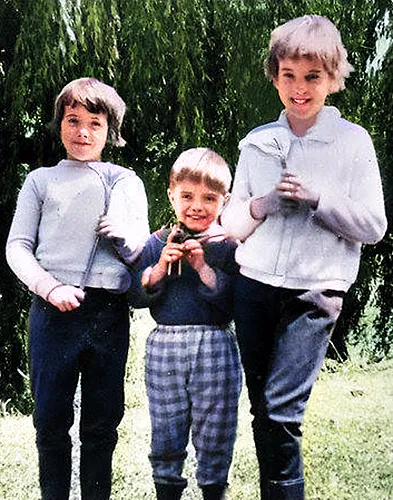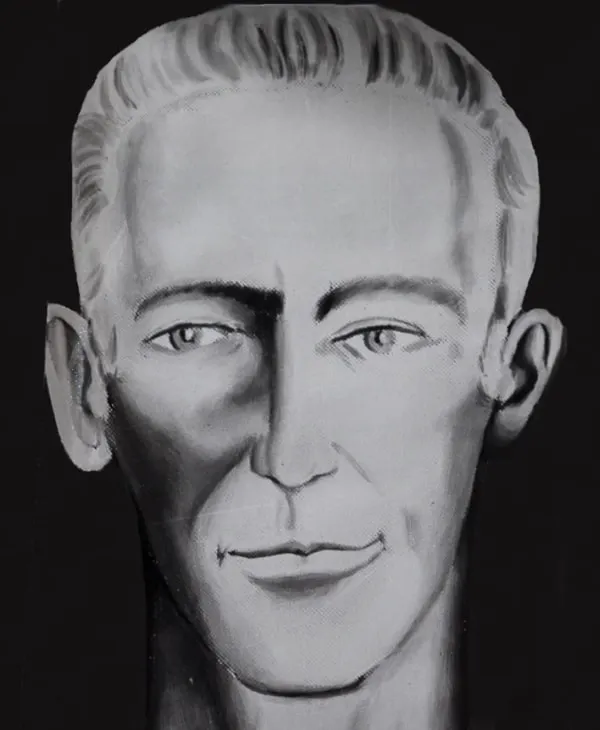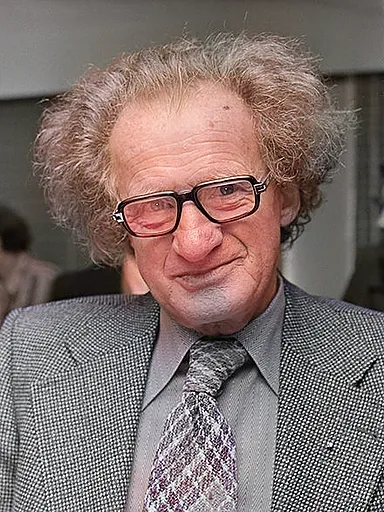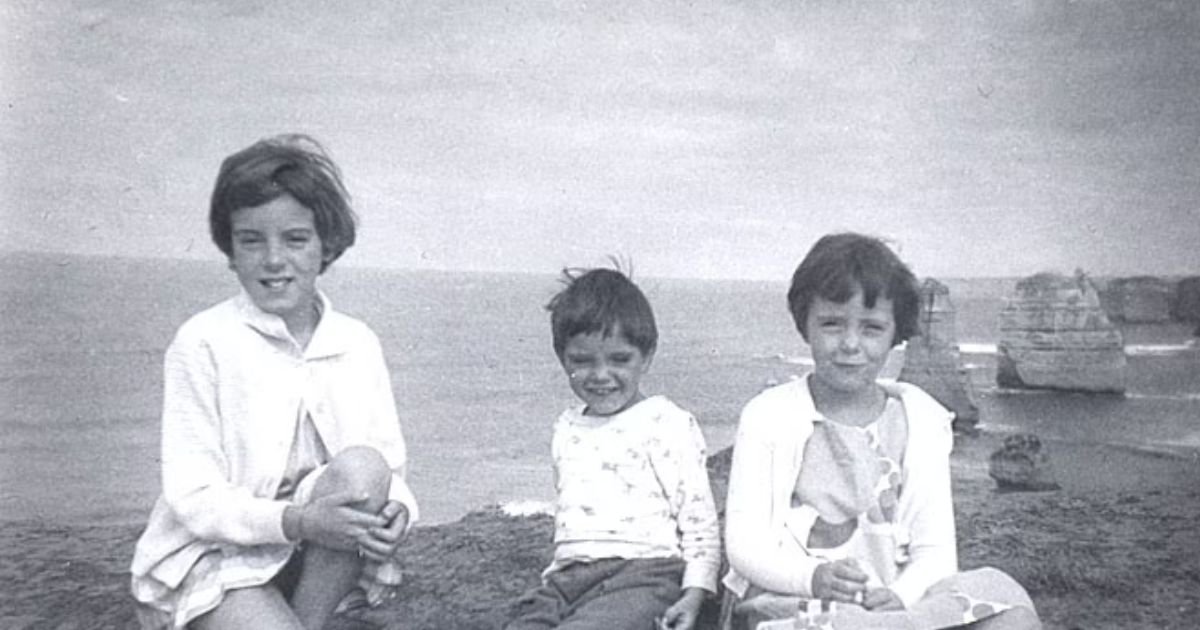The Beaumont Children, also known as Jane Nartare Beaumont (10 September 1956), Arnna Kathleen Beaumont (11 November 1958), and Grant Ellis Beaumont (12 July 1961), were three Australian siblings who vanished from Glenelg Beach near Adelaide, South Australia, on January 26, 1966, in what was likely an abd-uction and m*rder. They were nine, seven, and four years old, respectively, when they vanished.

- Jim dropped the kids down at Glenelg Beach on January 25 before leaving for a sales trip to Snowtown in the midst of a summer heat wave.
- The children urged their mother to go back to Glenelg Beach early on January 26, 1966. They took a five-minute, three-kilometer bus ride to go to the beach because it was too hot to walk there. They boarded the bus at 8:45 am, and it was scheduled to arrive at their house at 12:00 pm.
- But when the kids didn’t show up on the 12:00 or 2:00 bus, Nancy started to worry, and when Jim arrived home early from his trip at 3:00, he immediately drove to the crowded beach.
- He went back and they searched the streets and went to friends’ homes but couldn’t find the kids. They proceeded to the Glenelg Police Station at 5:30 p.m. to file a missing person report.
Witnesses
According to police investigations, on the day they vanished, The children were reportedly spotted with a “tall, thin male in his mid-30s in swim trunks,” according to several witnesses. Although their mother portrayed them as reserved, Arnna’s casual remark the day before that Jane had “acquired a boyfriend down the beach” implied that the man had made an effort to win their trust. The Colley Reserve and Wenzel’s Cake Shop on Moseley Street in Glenelg reported seeing the three kids. The youngsters and their presumed friends were not found despite extensive searches. The case is frequently called the loss of Australia’s innocence because it has remained unresolved despite several suspicions and inquiries.
- According to the initial statement, the Beaumont children were spotted walking alone away from the beach down Jetty Road, in the general direction of their home, around 3:00 p.m.
- The witness, a postman, was well-known to the youngsters, and his testimony was considered credible.
- In the main street, the children were “holding hands and laughing,” he claimed.
- [14] Police were baffled as to why the reliable children, who were already an hour late, were roaming alone and seemingly unconcerned. This was the children’s final known sighting.
- Two days after his initial statement, the postman phoned the police and stated that he thought he spotted them in the morning, not the afternoon as he had previously stated.
- Miss Daphne Gregory, a neighborhood resident, apparently saw the children at 3:00 p.m. with a guy who was “carrying an airplane suitcase, identical to one held by Jane Beaumont.” Several months later, a woman said that on the night of the disappearance, a man, accompanied by two girls and a kid, visited a nearby house that she thought was empty.
- Later, the woman claimed to have observed the youngster going alone down a lane before being pursued and roughly apprehended by the man.
- The house appeared abandoned the next morning, and she saw neither the man nor the children.
- Police were unable to determine why she had failed to submit this information earlier.
- Other sightings of the youngsters were recorded for approximately a year after their disappearance.
The case attracted a large number of suspects, hoaxes, and theories after receiving significant police and media interest in Australia and throughout the world. The disappearance is largely attributed to bringing about a change in Australian culture because parents realized that their kids could no longer be left unattended in public places. The tale has continued to be of public interest for more than 50 years due to the frequent and extensive attention given to it, its relevance in Australian criminal history, and the fact that the mystery surrounding the children’s abd-uction has never been solved. The South Australian government has, as of 2018, offered a $1 million prize for information pertaining to the unsolved crime.
To identify the man, a composite picture sketch of him was created.

(Supplied: SA Police)
Investigation
Police promptly organized a search of Glenelg Beach and surrounding areas, assuming the children were nearby and had just lost track of time. The search was subsequently expanded to include the sandhills, ocean, and neighboring structures, as well as the airport, rail lines, and interstate roadways, due to the possibility of an accident or kidna-pping. Within 24 hours, the entire country was aware of the situation. Within three days, on January 29, the Adelaide Sunday Mail headlined, “S*x crime now feared,” highlighting the rapidly emerging idea that they had been abd-ucted and m*rdered by a s*x offender. Despite this, the official award was only A£250 at first.
The Patawalonga Boat Haven was emptied on January 29 after a woman reported to police she had spoken with three youngsters who resembled the Beaumont children at the haven around 7:00 p.m. on January 26. The area was examined by police cadets and members of the emergency operations group, but nothing was discovered.
Hoax letters
About two years after the disap-pearance, the Beaumonts received two letters: one allegedly written by Jane, and the other by a man claiming to be the children’s guardian. The postmark on the envelopes read Dandenong, Victoria. The brief notes depicted a somewhat comfortable existence and made mention of “The Man” who was keeping them. After comparing the letters to others sent by Jane, the police concluded that they were most likely genuine. According to “The Man’s” letter, he had declared himself “guardian” of the children and was willing to return them to their parents. A meeting location was specified in the letter.
The Beaumont parents drove to the stated location, escorted by a detective, but no one came. A third letter, purportedly from Jane, arrived sometime later, indicating that the guy had realized a disguised detective was present and that he had opted to retain the children because the Beaumonts had violated his trust. There were no additional letters.
New forensic tests of the letters revealed that they were fake in 1992. With the advancement of fingerprint technology, the author was identified as a 41-year-old guy who was a teenager at the time and had written the letters as a joke. He was not charged with any crime due to the passage of time.
Gerard Croiset
The Beaumont case drew worldwide notice. Gerard Croiset, a Dutch psychic, was brought to Australia to aid in the search on November 8, 1966, sparking a media frenzy.

Croiset’s efforts were futile, as his story changed from day to day and provided no hints. He pinpointed a location in a warehouse near the children’s home where he suspected their bodies were hidden, inside the ruins of an ancient brick kiln. The property owners, who were hesitant to excavate based only on a psychic’s assertion, eventually caved to public pressure when publicity helped fund $40,000 to demolish the building. There were no remains or evidence linking any of the Beaumont family members discovered.
Croiset’s building was undergoing partial destruction in 1996, and the owners agreed to a comprehensive examination of the property. Once again, no evidence of the youngsters was discovered.
Suspects
Several possible suspects have been linked to the unsolved disappearance of the Beaumont Children in 1966:
- Bevan Spencer von Einem: He was sentenced to life imprisonment in 1984 for the m*rder of another teenager. Police suspected him of accomplices and believed he may have been involved in additional m*rders, including the Beaumont disappearance. An informant known as “Mr B” claimed von Einem had boasted about taking three children from a beach years earlier, conducting “experiments” on them, and k*lling them. However, some details of Mr. B’s account did not align with known facts, and von Einem has not been ruled out as a suspect.
- Arthur Stanley Brown: Brown was charged in 1998 with the m*rders of two sisters in Queensland. He bore a resemblance to the suspect descriptions in both the Beaumont and Oval cases but lacked a concrete connection to the Beaumonts.
- James Ryan O’Neill: He was convicted of a m*rder in Tasmania and claimed responsibility for the Beaumont disappearance to acquaintances. However, the South Australia Police interviewed him and discounted him as a suspect.
- Derek Ernest Percy: A convicted child m*rderer, Percy was suggested as a suspect due to evidence gathered by cold case investigators. He was, however, considered too young to be the suspect seen with the Beaumont children.
- Alan Anthony Munro: A businessman with a history of child se* offenses, Munro was implicated through a child’s diary that placed him near Glenelg Beach at the time of the disappearance. He was convicted of child se* offenses but had not been previously considered a suspect in the Beaumont case.
- Harry Phipps: A local factory owner who lived near Glenelg Beach, Phipps was suspected after the publication of a book but was not named as the “Satin Man” in the book. His estranged son, Haydn, claimed to have seen the Beaumont children in his father’s yard on the day of their disappearance. An excavation of Phipps’s former factory found no evidence related to the case.
- The Family M*rders: This series of gru*some m*rders in Adelaide involved mutilated bodies and surgical procedures on victims. Bevan Spencer von Einem was convicted in one of these m*rders, and there were allegations of his involvement in the Beaumont and Oval abductions during his trial.
Despite these leads and suspicions, the Beaumont Children’s disappearance remains unsolved, and no conclusive evidence has been found to identify their abductor or determine their fate.
What of case
Excavation began in November 2013 in the back of a North Plympton factory that had formerly belonged to one suspected suspect in the case, Harry Phipps. In February 2018, more excavation was carried out at a slightly different place on the site, however, nothing of significance was discovered. The excavations were predicated on two men saying that they had been paid as youngsters to dig a hole in that region around that time, as well as geophysical testing that revealed anomalous disturbed soil.
There were animal bones discovered, but nothing related to the Beaumont children.
